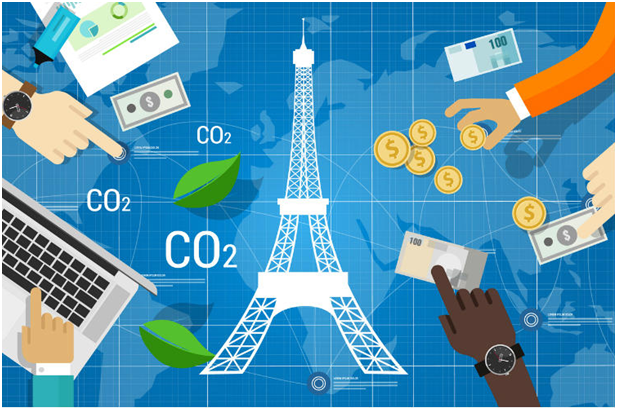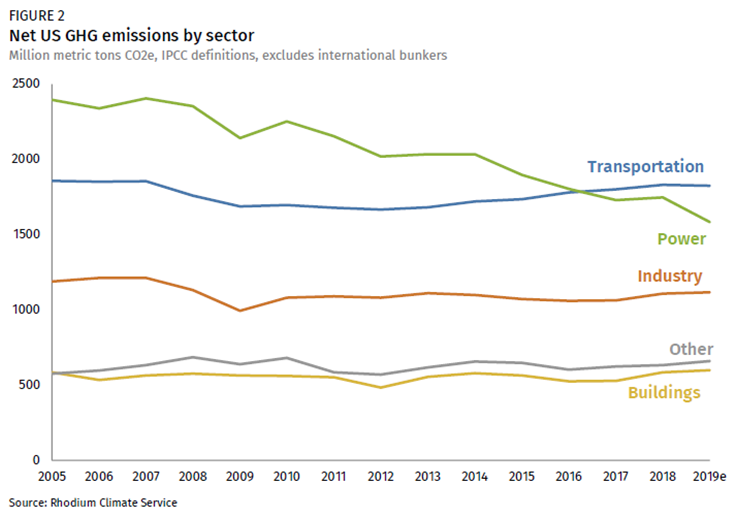
Charles Goulding Jr. takes a look at upcoming US policy focus on climate change and how 3D printing plays a role.
By all accounts, President-elect Biden’s climate plan is unprecedented in scope and ambition. The plan includes a renewed commitment to the Paris Agreement and $2 trillion in new spending. Both objectives have important ramifications for R&D as well as 3D printing.
Paris Agreement
The Paris Agreement’s main goal is to keep global temperature rise to 2 degrees Celsius over pre-industrial levels — an increase beyond which scientists say the consequences of climate change will be catastrophic. Indeed, to dramatize this critical goal, a new clock now ticks toward this very temperature change in New York City’s Union Square.
Achieving this temperature limitation will require an effort that has been likened to World War II levels of mobilization. Much of that mobilization will require significant new R&D. The graph below shows how, absent concerted measures, emissions will likely remain flat — as they have done for the past two decades — rather than decrease significantly.

The graph also shows that the US must attack transportation emissions first and foremost. Needed innovations with help from 3D printing include lighter vehicle parts and massive new fleets of electric vehicles.
In addition to transportation improvements, the country’s building and housing stocks must be continuously improved. Not only will this help decarbonize the environment, but it will also generate cost savings for ratepayers, especially if the Biden administration implements a carbon tax.
A tax, coupled with incentives, are compelling reasons for companies and homes alike to invest in the most cutting edge clean energy technologies possible. These can include 3D printed lights and HVAC parts, as well as building envelope improvements, solar power technologies, wind and geothermal.
Another less-discussed aspect of the Paris Agreement involves climate resiliency, which is the ability to withstand and/or adapt to the effects of climate change. Physical (as opposed to socioeconomic) aspects of climate residency that have relevance for 3D printing include fortified structures for extreme weather like hurricanes, desalination, and sea walls.
With respect to desalination, 3D printing innovations have boosted efficiency both for thermal and membrane approaches.
The Biden Plan
President-elect Biden has his own plan for combatting climate change, one with targeted objectives that not only help to meet Paris Agreement goals but also to spur the economy. These include:
- $2 trillion of new spending in clean energy and other climate goals
- Net-zero emissions by 2050
- Using the federal government procurement system toward 100% clean energy and zero-emissions vehicles
- Using government purchasing power and supply chain know-how to drive innovation
- Rigorous new fuel economy standards and movement toward 100% electric vehicles
- Aggressive appliance and building efficiency standards
- Public company disclosure of climate risks and emissions
With respect to supply chain efficiency, 3D printing has important benefits. For one, the ability to send digital files as opposed to prototypes and other products cuts down on the movement of goods.
For another, the ability of a firm to manufacture items more quickly enables them to move toward an on-demand model that reduces supply inputs as well as inventory. This, in turn, has the ability to cut down dramatically on the number of shipped goods throughout the supply chain.
For public disclosure of emissions, this requirement will put added pressure on commercial and industrial firms to reduce their carbon footprints. If a carbon tax also accompanies the Biden plan, these same entities, as well as residence owners, will face significant pressure to reduce emissions.
R&D will be crucial toward helping such entities avoid paying both high carbon taxes and the social costs of failing to meet ESG standards. Even absent these measures, ratepayers can save significantly at the meter through clean energy investments. From 3D printed lighting industry components to printed parts for hydrothermal and other larger scale clean energy systems, 3D printing has an important role to play.
The Research & Development Tax Credit
3D printing firms innovating in technologies that touch on energy and other such efforts can avail themselves of the federal R&D tax credit to help subsidize their research efforts.
Enacted in 1981, the now permanent Federal Research and Development (R&D) Tax Credit allows a credit that typically ranges from 4%-7% of eligible spending for new and improved products and processes. Qualified research must meet the following four criteria:
- Must be technological in nature
- Must be a component of the taxpayer’s business
- Must represent R&D in the experimental sense and generally includes all such costs related to the development or improvement of a product or process
- Must eliminate uncertainty through a process of experimentation that considers one or more alternatives
Eligible costs include U.S. employee wages, cost of supplies consumed in the R&D process, cost of pre-production testing, U.S. contract research expenses, and certain costs associated with developing a patent.
On December 18, 2015, President Obama signed the PATH Act, making the R&D Tax Credit permanent. Beginning in 2016, the R&D credit can be used to offset Alternative Minimum Tax for companies with revenue below $50MM and for the first time, pre-profitable and pre-revenue startup businesses can obtain up to $250,000 per year in payroll tax cash rebates.
Conclusion
Overhauling the nation’s building stock, supply chains, and transportation systems will be the key to meeting the nation’s renewed Paris Agreement obligations. President-elect Biden’s plan is tailored to the achievement of Paris objectives. It also clearly sees an important role for investment and R&D. Efficiently-produced, lightweight parts and products will help 3D printing take part in this movement to beat the carbon clock.
